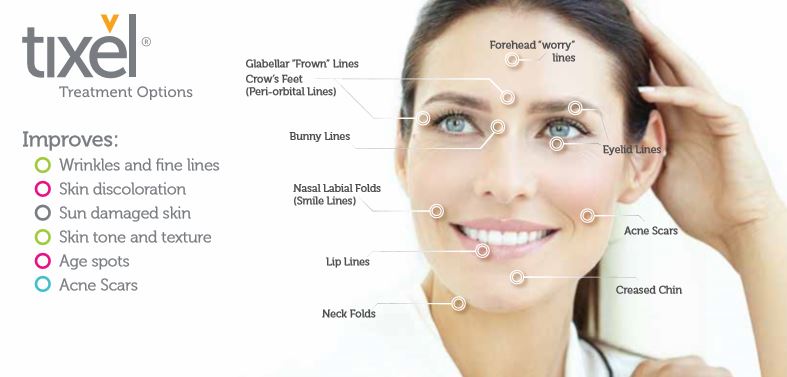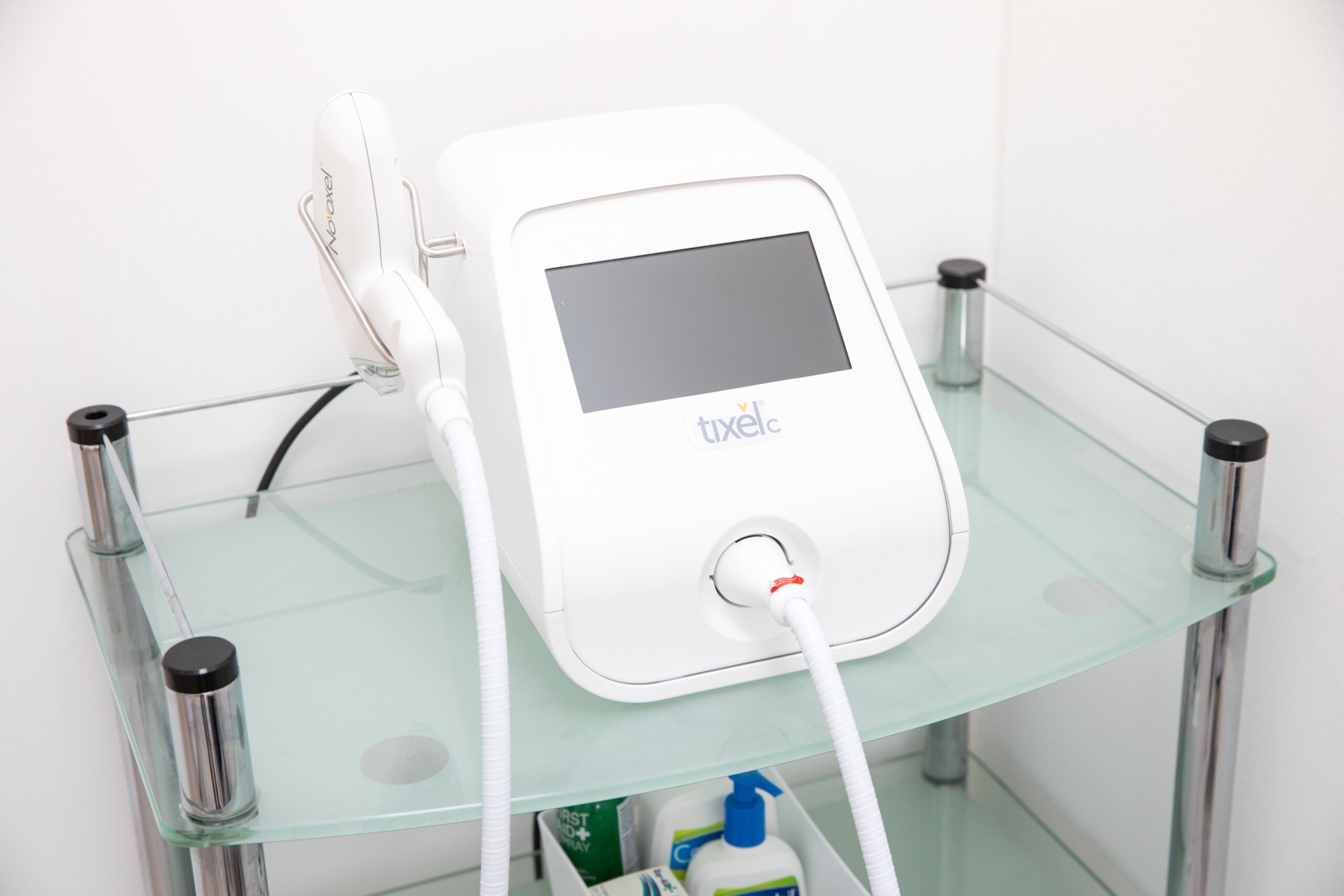Tixel Skin Rejuvenation
Rejuvenate, resurface and tighten the skin
What is Tixel Thermal Fractional Skin Rejuvenation?
Tixel in London
TIXEL® is an award-winning treatment and one of latest technologies we offer at Ace Aesthetics. It uses heat to rejuvenate, resurface and tighten the skin in a process known as ‘thermal fractional skin rejuvenation.” It has ablative and non-ablative settings to tailor treatment to the individual, and is suitable for use right up to the lash line for crepey skin around the eyes, without the downtime and side effects of regular lasers. Tixel® is versatile, using a heated plate to deliver the required amount of heat to the surface of the skin very quickly, without damaging deeper skin tissues.
- Fine lines & wrinkles
- Skin discolouration
- Sun damaged skin
- Skin tone and texture
- Age spots
- Acne scars
The top skin layer is vaporised at the sites where the skin makes contact with the Tixel pyramids. Vaporisation leads to removal of tiny portions of the epidermis. This stimulates new epidermis to form. This is fresher, has less pigmentation and sun damage, and gives the skin an even glow with a smooth feel. There are effects on the dermis, which is lower down in the skin, as well. The heat that reaches the dermis and causes the tiny zones to coagulate. This in turn causes fibroblasts to start producing collagen which takes a period of three months or more to develop fully. The collagen boost in the dermis improves lines and wrinkles, tightens loose skin and sagging, and reduces the appearance of acne scars.
Tixel FAQs
Frequently Asked Questions
Tixel treatment can be applied to any areas in which there are concerns.
The most commonly treated sites are;
Face
Eyelids
Neck
Décolleté (the upper chest)
Backs of the hands
All three face zones can be treated together, or any one area can be treated according to your individual needs.
The skin is gently heated using a grid of tiny pyramids, a sterile titanium tip which is heated to 400 degrees C, approximately 1 cm square and contains 9 columns and 9 rows of tiny pyramids (totalling 81). The tip makes brief contact with the skin, where it transfers thermal energy to the upper skin layers, creating micron sized pores. The energy transfer can be controlled according to the treatment area and condition being treated. This is adjusted by varying the tip’s skin exposure time as well as its thermal conductivity. There is no laser, injection or radiation involved. The tiny little microcrusts can be seen in a grid pattern as shown in the picture below. When compared to fractional CO2 laser, there is much less charring and redness which means that make-up or a tinted moisturiser can be applied early on.
Looking after your skin following a treatment is very simple. A moisturiser should be applied every three to four hours for the first couple of days and then twice a day until all the microcrusts have healed. Make up can be applied on the same day for a light treatment or two or three days later after an intensive treatment.
Avoid touching the treated area in order to minimise the risk of infection
Don’t be tempted to pick at any peeling or crustiness – this will take about a week to pass
It is important to use good sun protection for up to 3 months after treatment
One of the main attractions for Tixel treatment is that it has far less downtime than other resurfacing technologies. The amount of downtime incurred depends on the strength of treatment. If a light Tixel treatment is required then it is possible to apply make up within a couple of hours and return to work. If a more intensive treatment is required then we will recommend a couple of days off work, as this is will cause a spell of skin redness, with some scabbing. It is usually possible to wear make up after the second day.
Treatment takes between 30 to 90 minutes depending on the size of the area which is treated.The treatment is remarkably comfortable and can be performed without anaesthetic cream.
However, we do also offer the option of anaesthetic cream for 30 minutes beforehand to maximise comfort, and because the eye and mouth area can be more sensitive.
Several shots, each lasting a fraction of a second, are placed in a row so as to cover evenly the whole area being treated. A tiny sting, if anything, may be felt with each shot.
Your practitioner will discuss the number of treatments your skin requires with you at your consultation. Usually three to five treatments are required. Treatments are usually 6 to 8 weeks apart. Ablative treatment take fewer sessions, but each one is more aggressive so involves a couple of days of the skin crusting and scabbing. Most patients prefer to stay at home during this time. Non-ablative or channel treatments will take a few more sessions, but there will be no need to have time off work.
Fast treatmentHighly effective – results comparable to fractional laser/CO2 resurfacing Minimal discomfort and pain Rapid healing and minimal downtime Natural approach – no lasers, toxins, scalpels or needles Sterile, safe, radiation-free Suitable for face, fine lines around neck, eyes, decollete
Open-channel treatment makes the skin porous in order to allow penetration of topical treatments. This can be used in treatment of skin pigmentation problems such as Melasma or Hyperpigmentation.
Hydrate /Vitamins / Pigment / Stimulate collagen / Relax muscles
Open Channel is a form of mesotherapy, creating channels in the skin for infusion of sterile antioxidants, hyaluronic acid, anti pigmentation serums etc. No real ‘downtime’ issues. Particularly useful for periorbital rejuvenation, pigment issues and acne prone skin.
Both ablative and non-ablative treatments can be given.
Ablative Tixel treatment is designed at refreshing the epidermis and tightening the dermis. The treatment is more intense and the recovery period slightly longer. Non-ablative Tixel treatment is less intense and has a very fast recovery.
There is less redness and fewer microcrusts form. As non-ablative treatments are gentler, they are suitable
for those with less available time for recovery. More treatments are required to get similar effects to ablative treatment.



